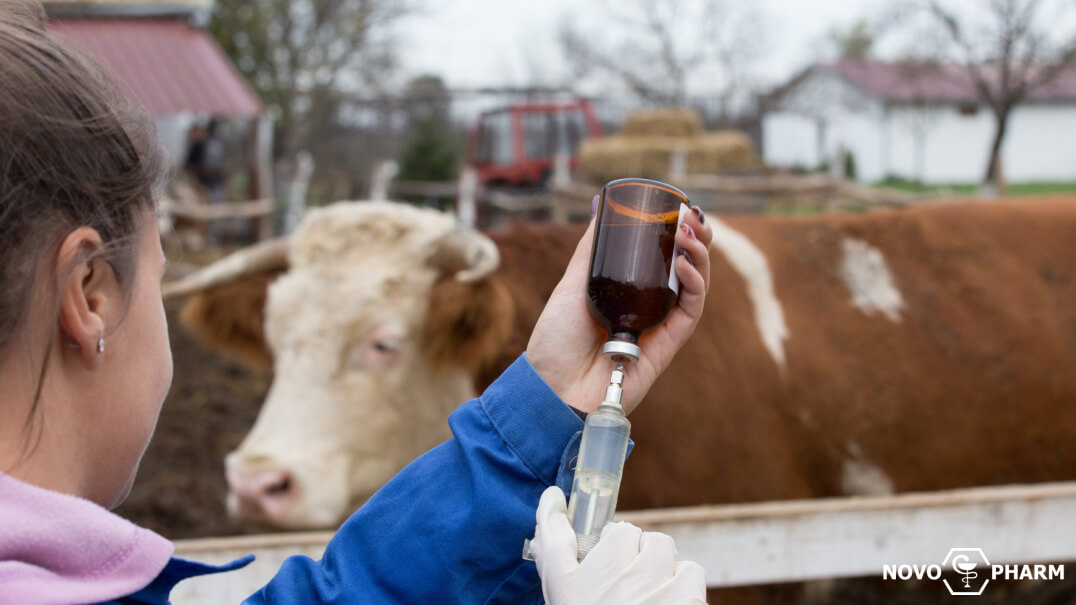Trenbolone acetate’s reputation was shaped by its early use: bodybuilders in the 1980s-1990s extracted it from Finaplix cattle pellets, producing contaminated ‘homebrew’ solutions that created myths about the drug’s supposed harshness.
Modern trenbolone acetate, however, is a purpose-manufactured API with standardized purity, yet outdated claims from the Finaplix era still circulate. This article explains where those misconceptions came from and how Tren A is actually produced and used today.
The origin of the myth
Finaplix was originally developed as a veterinary implantation pellet containing trenbolone acetate, intended to enhance feed efficiency and lean tissue accretion in cattle. The formulation was designed exclusively for subcutaneous implantation in livestock, not for human administration.
During the 1980s and 1990s, bodybuilders began acquiring Finaplix and extracting trenbolone acetate through improvised, non-sterile chemical methods. These early ‘homebrew’ preparations were often contaminated or inconsistently purified, leading to injection-site irritation, unstable potency, and a higher likelihood of adverse reactions. Consequently, trenbolone acquired a reputation for being uniquely harsh: not because of the molecule itself, but because of the crude extraction processes.
Although modern trenbolone acetate is produced through standardized chemical synthesis rather than pellet extraction, many of these outdated perceptions continue to circulate today.
How trenbolone acetate reached the bodybuilding world
Trenbolone acetate entered bodybuilding through underground forums, experimentation by early chemists, and occasional veterinary supply leaks. In the 1980-1990s, information spread informally, giving the compound an early reputation as a ‘hardcore’ drug despite the lack of human-grade sources.
Transition to raw powder
In the late 1990s-early 2000s, underground labs began obtaining pure trenbolone acetate powder directly from chemical manufacturers. This ended the reliance on Finaplix pellets and eliminated the contamination and variability associated with homemade extraction.
Shift to purpose-manufactured material
Modern trenbolone acetate is produced as a standardized API, esterified and formulated similarly to testosterone or drostanolone. The move from pellet extraction to clean raw material fundamentally changed the compound’s quality and consistency.
Trenbolone acetate today: what it actually is
Modern trenbolone acetate is synthesized as a dedicated active pharmaceutical ingredient (API), manufactured through standardized chemical processes comparable to those used for testosterone, drostanolone, or nandrolone esters. This shift has eliminated the variability and contamination risks that defined the Finaplix era.
Evidence of the modern shift
- Independent lab analyses of reputable underground laboratory (UGL) products consistently demonstrate trenbolone acetate with high purity, confirming synthesis from pharmaceutical-grade raw materials rather than veterinary pellets.
- Widespread availability across multiple esters: acetate, enanthate, and hexahydrobenzylcarbonate indicates modern production routes, since these esters were never part of veterinary formulations.
- Standardized esterified raw materials now match the chemical profile and manufacturing quality of other contemporary anabolic-androgenic steroids, further demonstrating that current trenbolone acetate is produced through controlled synthetic methods, not extraction.
Current uses among bodybuilders
Trenbolone acetate is employed primarily for its rapid and pronounced impact on physique and performance. Bodybuilders use it to achieve:
- rapid changes in body composition;
- increased muscular hardness and density;
- significant strength gains with minimal water retention
Its short half-life makes the acetate ester preferable, allowing faster onset and easier adjustment or discontinuation when managing side effects.
FAQ: The most common misconceptions
Is trenbolone acetate still made from cattle pellets?
No. Pellet extraction ended decades ago; modern Tren A is manufactured directly as raw powder.
Is acetate “harsher” because it used to be a veterinary drug?
No. The harshness comes from the molecule itself, not its former delivery form.
Is Finaplix chemically different from modern Tren A?
No. The active compound trenbolone acetate is identical.
Does acetate have more side effects than enanthate or hex?
No. The ester only changes release speed, not toxicity.
Are stories about ‘dirty tren’ still relevant?
Only as history. Modern tren’s quality depends on the lab that makes it, not on Finaplix.
Conclusion
Most misconceptions about trenbolone acetate stem from practices that ended decades ago. Today it is a clean, synthetic compound unrelated to cattle pellets, and its effects reflect dosing and individual response. Recognizing this shift helps separate old lore from current reality and clarifies Tren A’s role in modern bodybuilding.


